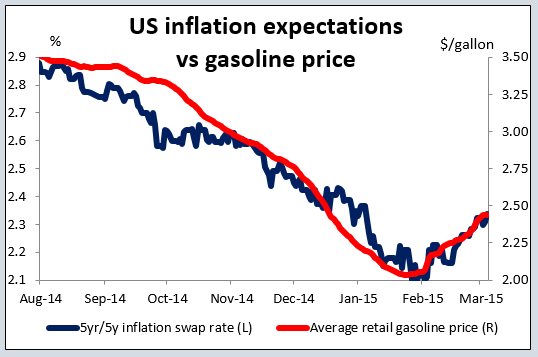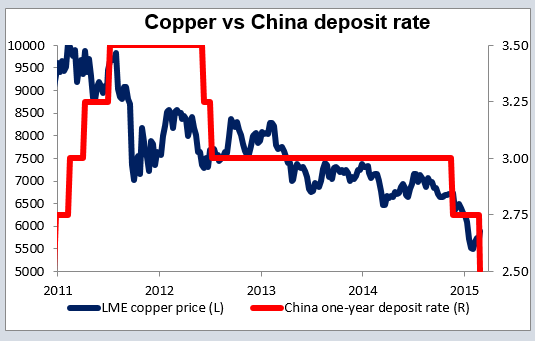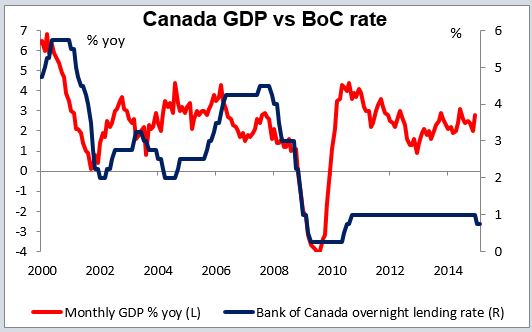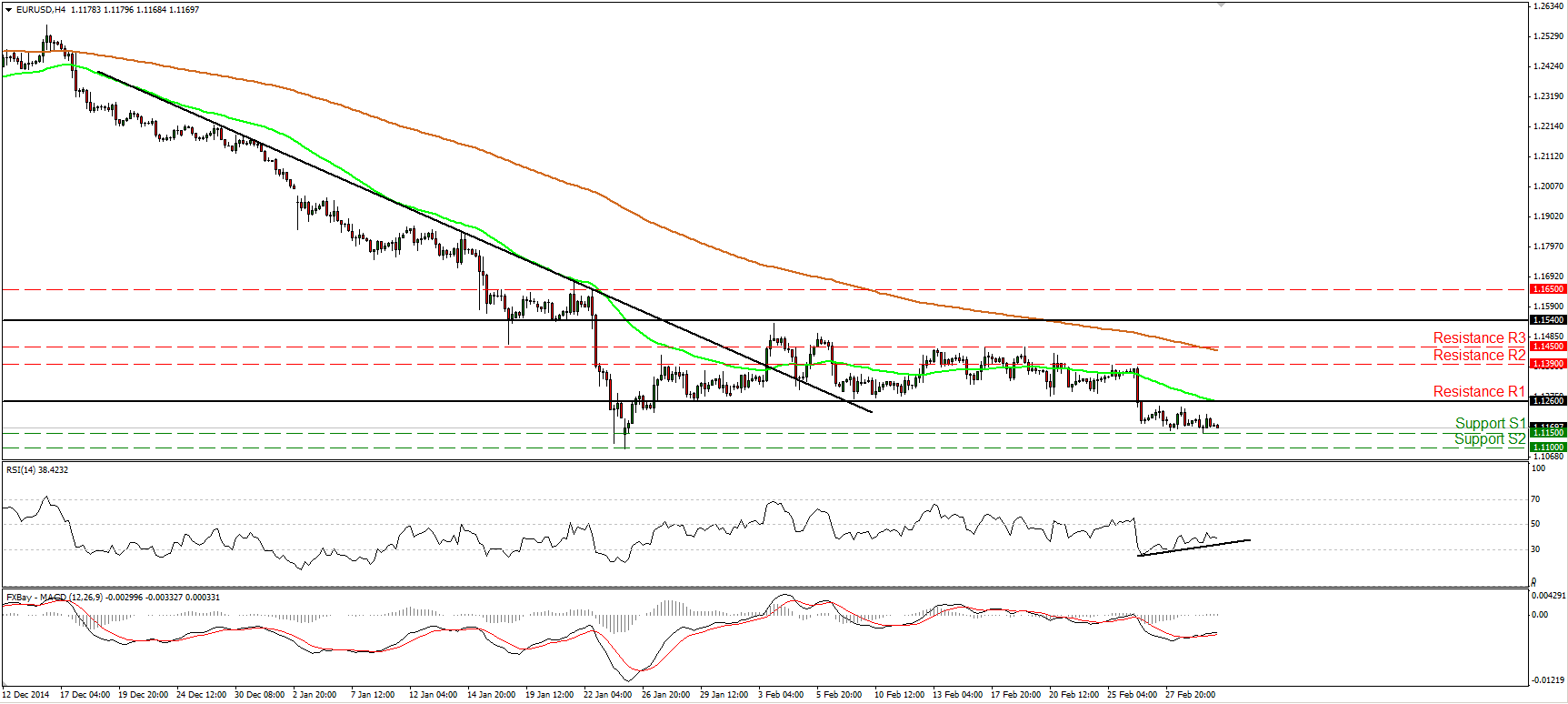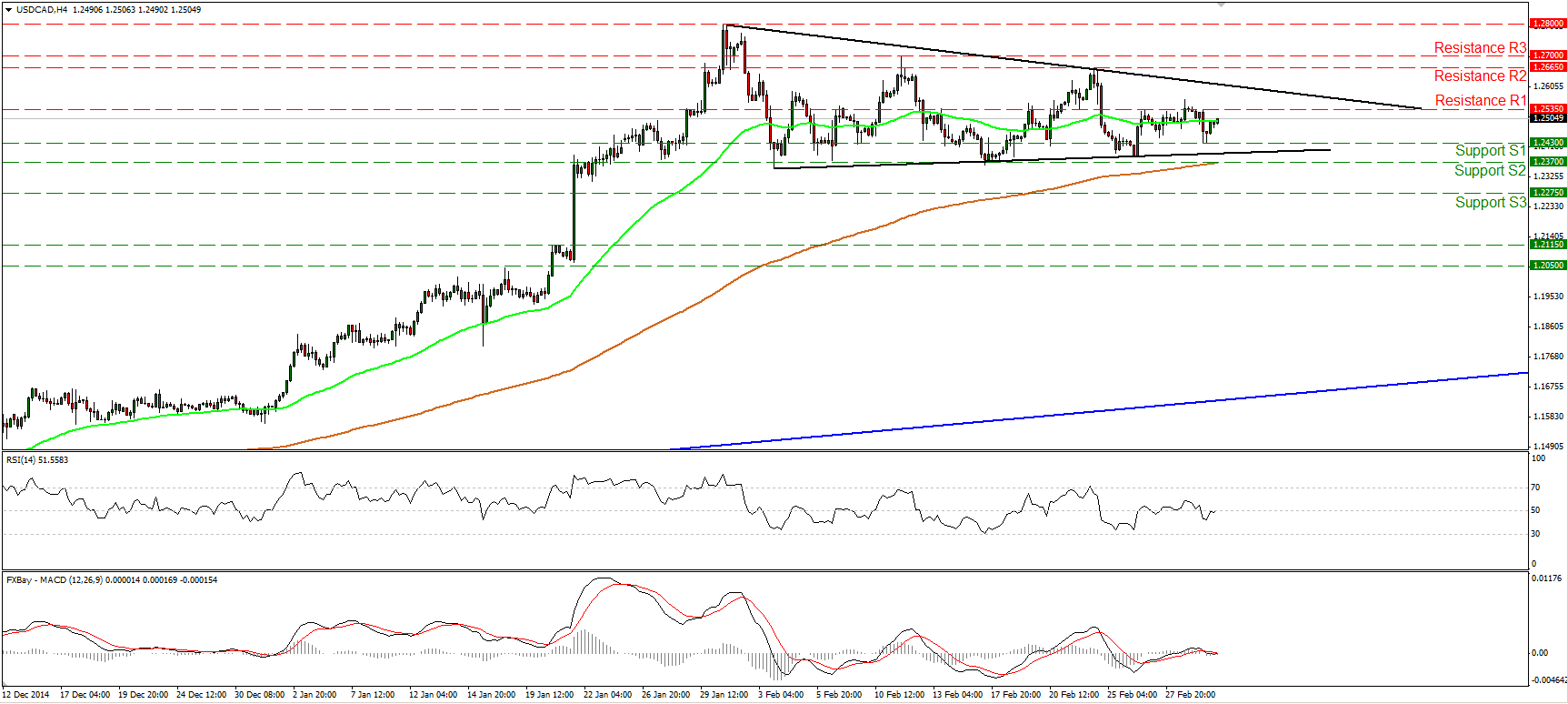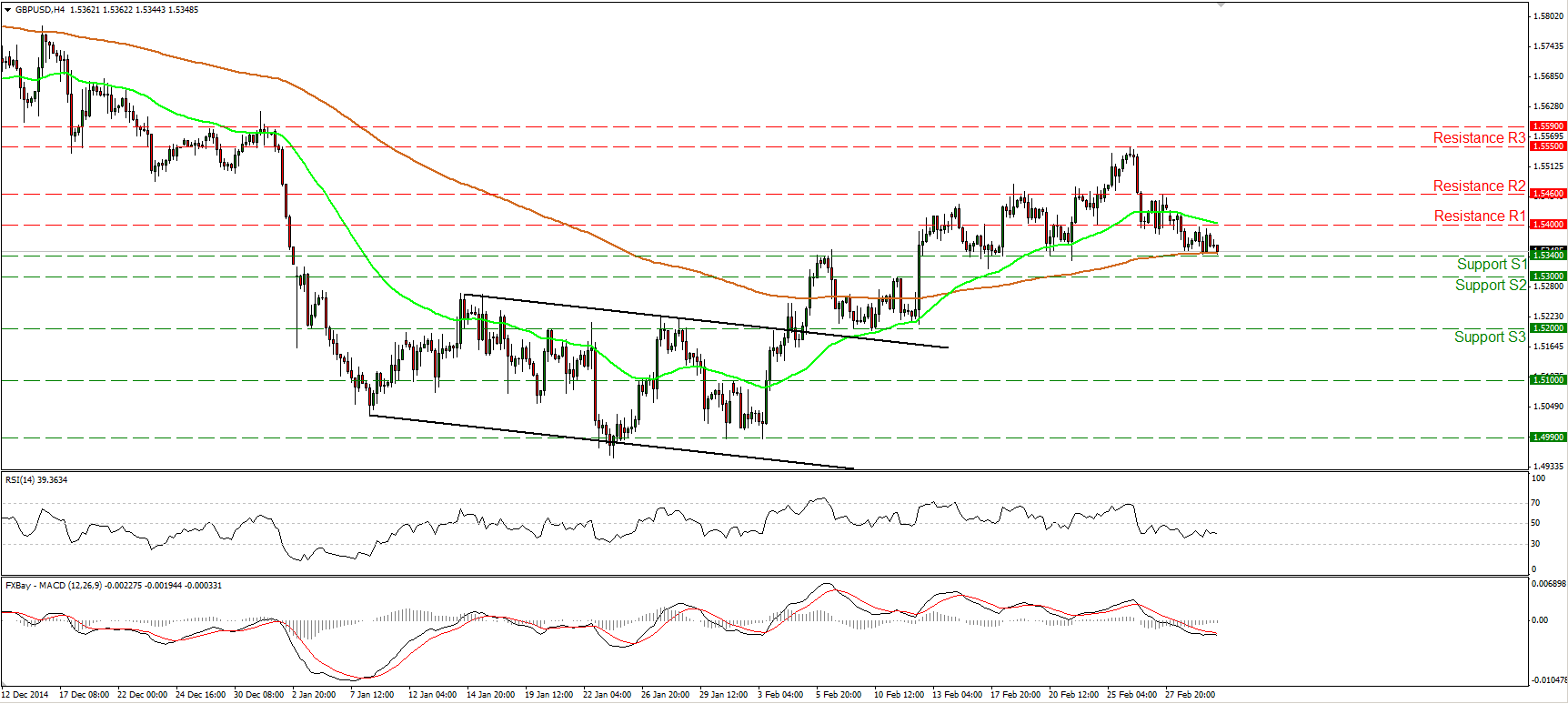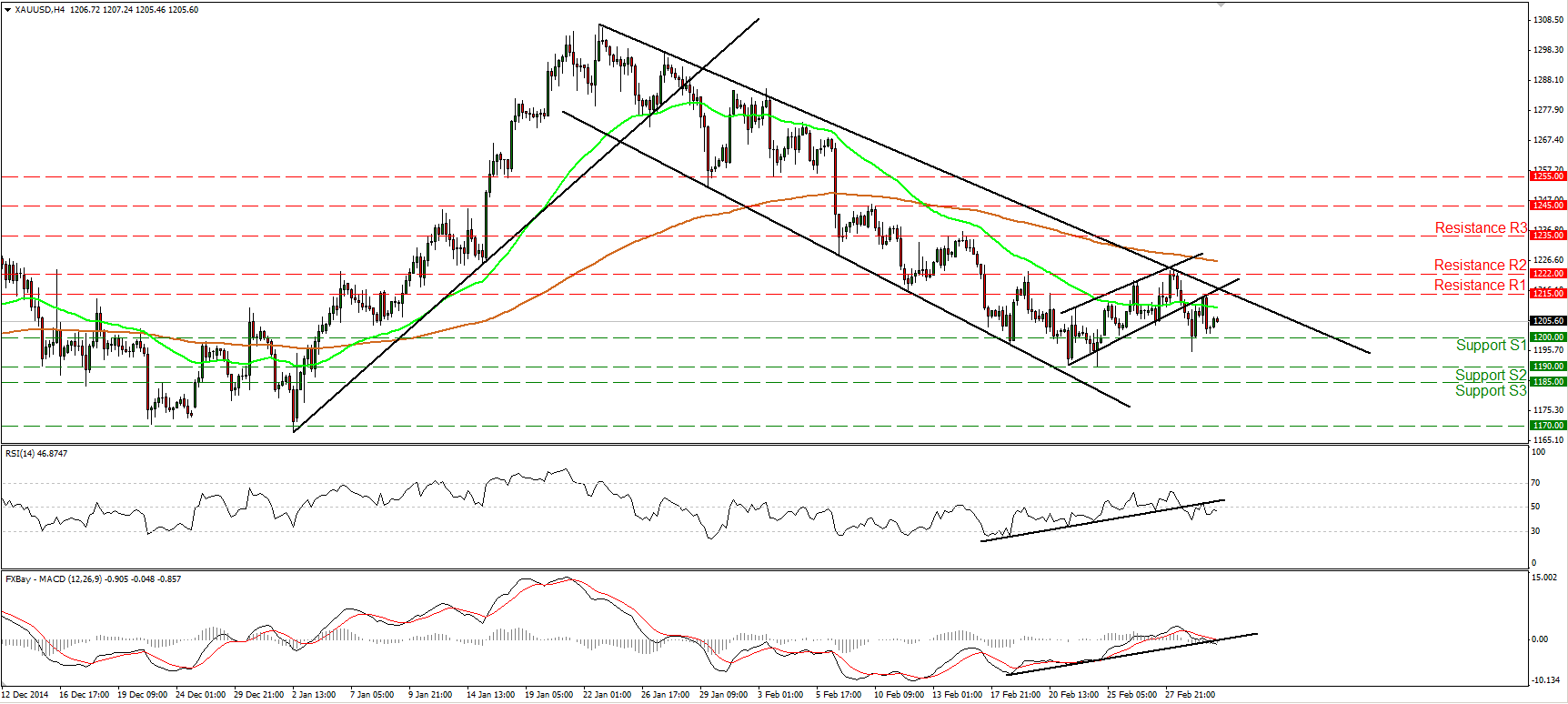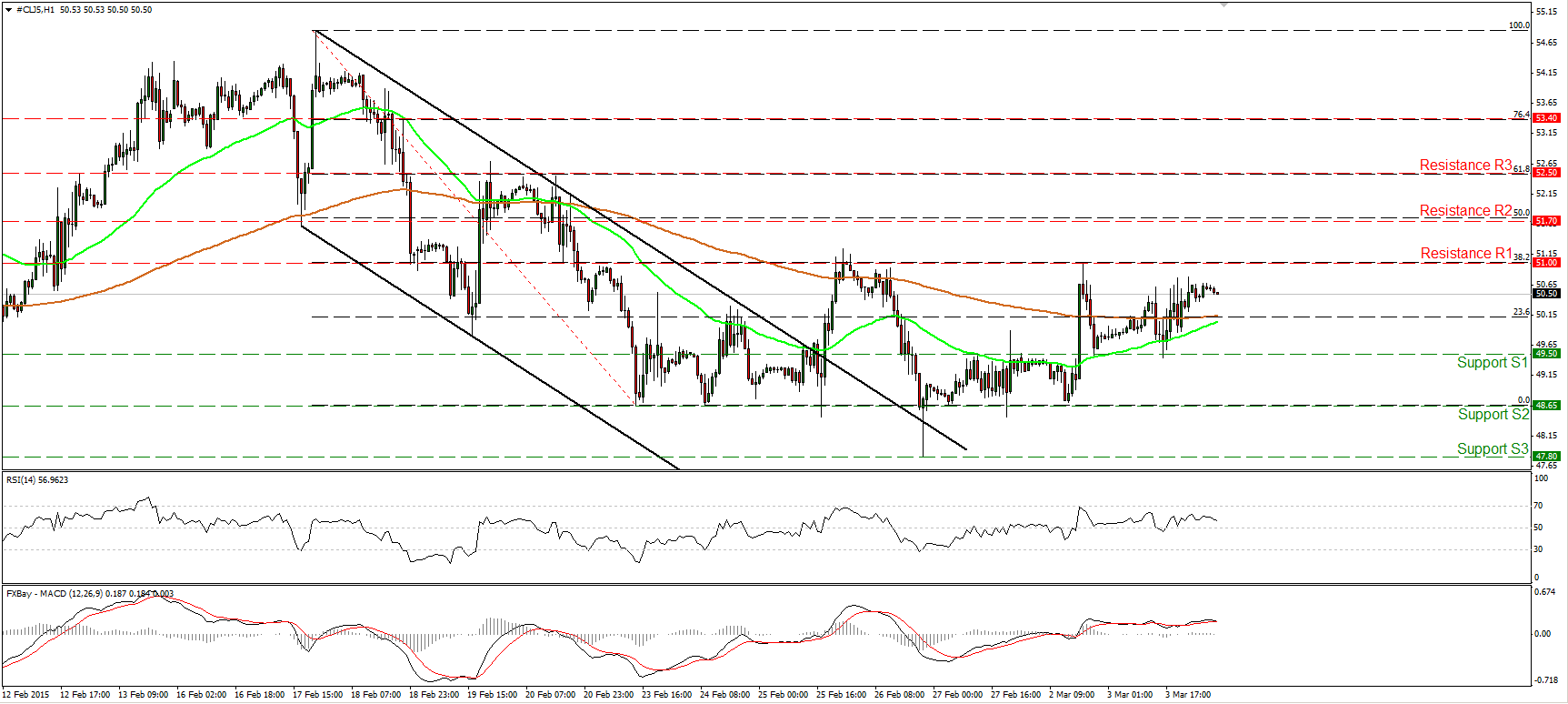Diverging commodity prices spell diverging paths for currencies. US gasoline continue to rise. The retail price bottomed at USD 2.033 per gallon on Jan. 25th and has since risen 20% to USD 2.441 a gallon. This is still low enough to provide a boost to consumption, but the direction is significant – it makes it less likely that the US will fall into deflation. US inflation expectations are gradually moving up as a result, with the 5yr/5yr inflation swap now at 2.34%, up from the low of 2.10% on 29 January, and the 5yr inflation breakeven rate up to 1.54% vs the low of 1.05% on 13 Jan. Rising inflation expectations make a Fed rate hike more likely and as a result, Fed funds rate expectations are also moving up, which is supporting the dollar. The US currency is opening in Europe today unchanged to higher against all of its G10 counterparts except SEK, as well as most of the EM currencies that we track too (except RUB). Note that the rising price of gasoline is a function of the refining industry, not the price of crude – WTI remains around the USD 50/bbl level.
Copper fell slightly yesterday. The move was not significant except insofar as it shows that the enthusiasm over the weekend’s rate cut in China has faded already. These rate cuts temporarily boost AUD and NZD, but they should be seen as lagging indicators of slowing growth in China, not leading indicators of faster growth. The People’s Bank of China (PBOC) tends to cut rates in order to cushion the decline in growth, not to reverse it. This is one reason why I remain bearish on AUD in particular.
Greece is out of the headlines for now, but still bubbles under the surface. The country is putting together a list of proposals to present to next Monday’s Eurogroup meeting in hopes of securing part of the remaining EUR 7.2bn in bailout installments. However, the signs are mixed. On the one hand, several unpopular revenue-raising measures may still be included, such as property taxes. On the other hand, some households in “extreme poverty” may receive free electricity for a year, plus there are new rent subsidies and food coupons. State Minister Alekos Flambouraris Tuesday said that the coalition would not consider privatising the country’s water or electricity firms (the latter was a key part of the last Troika review). Also, it was reported that the Greek government has asked for the resignations of “executives of all the country’s main banks” so that they can bring the banks under public control, which will not go down well with the Troika, either. The Greek issue seems only to be on hold temporarily. I think it still has the potential to exert downward pressure on the euro. Indeed, further tension seems likely.
Overnight news: Australia’s GDP for Q4 rose 0.5% qoq, an improvement from 0.3% qoq previously but below expectations of 0.6%. The year-on-year rate of change remained at 2.5%, in line with the RBA’s view that the most recent data are consistent with moderate economic growth. AUD rose slightly on the news but quickly lost the gains to trade unchanged from before the news was announced after an RBA board member was quoted as saying that the unemployment rate was likely to rise as the country needs 3% growth to reduce unemployment. Meanwhile, NZD was supported by stable milk powder prices at the latest auction.
China’s final HSBC services PMI for February was revised up slightly.
India cuts rates India joined the rate-cut movement today, lowering its benchmark repurchase rate by 25 bps to 7.5%. More than a dozen countries have cut rates so far this year.
Today’s highlights: In Europe, we get the final service-sector PMIs for February from the countries we got the manufacturing data for on Monday. As usual, the final forecasts from France, Germany and eurozone are the same as the initial estimates, while the UK service-sector PMI is expected to have increased slightly. The revisions in the final manufacturing PMIs on Monday increase the likelihood that the service-sector PMIs will be revised as well. Eurozone’s retail sales for January are also coming out.
The Bank of Canada meets today. Canada’s GDP rose at a 2.4% qoq annualized pace in Q4, in line with the 2.5% qoq Bank of Canada estimate in its October monetary policy report. The strong growth figure has further reduced the likelihood of another rate cut by the Bank at today’s meeting. At their previous meeting, the Bank unexpectedly cut rates by 25 bps, the first change since it hiked rates to 1% in Sep. 2010. Until last Wednesday, market participants were expecting another rate cut by the same margin, but that became less likely after BoC Governor Poloz said that the cut has bought the Bank some time to see how the economy develops. The market interpreted that to mean no cut at this meeting. Nonetheless, we believe a dovish statement Wednesday could push the rate back above 1.2500 again.
In the US, the most important indicator we get is the ADP employment report for February two days ahead of the NFP release. The ADP report is expected to show that the number of jobs gained in February increased from January. We also get the revisions of the ADP employment report. The final Markit service-sector PMI and the ISM non-manufacturing index, both for February, are also due to be released. The Fed releases the Beige book two weeks before its March 17-18 policy meeting.
As for the speakers: Chicago Fed President Charles Evans and Kansas City Fed President Esther George speak during the US session.
The Market
EUR/USD fractionally lower
EUR/USD traded somewhat lower on Tuesday to trade near 1.1170. I still believe that the short-term outlook remains negative and that we are likely to see sellers challenging the low of the 26th of January at 1.1100 (S2), in the near future. However, there is still positive divergence between the RSI and the price action, while the MACD has bottomed and poked its nose above its trigger line. These momentum signs make me cautious that another bounce could be looming before the bears prevail again. With regards to the broader trend, I believe that the pair is still in a downtrend. EUR/USD is printing lower peaks and lower troughs below both the 50- and the 200-day moving averages. A break below the 1.1100 (S2) line in the future could challenge our next support at 1.1025 (S3), defined by the high of the 1st of September 2003.
• Support: 1.1150 (S1), 1.1100 (S2), 1.1025 (S3).
• Resistance: 1.1260 (R1), 1.1390 (R2), 1.1450 (R3).
USD/CAD around 1.2500 ahead of the BoC meeting
USD/CAD hit resistance near the 1.2535 (R1) barrier and tumbled after Canada’s GDP for Q4 expanded by more than anticipated. Nevertheless, the rate found support at 1.2430 (S1) and rebounded to cover a large portion of the news-driven slide. Today, the Bank of Canada meets to decide on its policy rate. Expectations of another cut today were scaled back after BoC Governor Poloz said that last meeting’s rate cut has bought the Bank some time to see how the economy develops. Nevertheless, a dovish statement could cause the rate to move above 1.2535 (R1) and hit the upper bound of a triangle that had been containing the price action since the beginnings of February. Switching to the daily chart, the rate is trading above both the 50- and the 200-day moving averages, something that keeps the overall upside path intact. A move above the upper line of the triangle is likely to signal trend continuation, in my opinion.
• Support: 1.2430 (S1), 1.2370 (S2), 1.2275 (S3).
• Resistance: 1.2535 (R1), 1.2665 (R2), 1.2700 (R3).
GBP/USD slides and challenges the 200-period EMA
GBP/USD slid on Tuesday to find support at the 200-period moving average, marginally above the 1.5340 (S1) barrier. The intraday bias is to the downside in my view, and I would expect a dip below 1.5340 (S1), to target the 1.5300 (S2) figure, defined by the inside swing high of the 11th of February. Both of the short-term momentum studies detect bearish momentum and magnify the case that we may see Cable lower in the near future. The RSI stays below its 50 line, while the MACD stands below both its zero and signal lines. In the bigger picture, although we had a daily close above the 80-day EMA, the rate formed a bearish engulfing candle pattern and tumbled to trade again well below the moving average. Therefore, I would prefer to take to the sidelines as far as the overall picture is concerned and wait to see if the bulls are willing to give another try for a move above the moving average and the 1.5500 zone.
• Support: 1.5340 (S1), 1.5300 (S2), 1.5200 (S3).
• Resistance: 1.5400 (R1), 1.5460 (R2), 1.5550 (R3).
Gold declines but pauses above 1200
Gold hit resistance at the lower bound of the flag formation, at around 1215 (R1), and slid to hit support marginally above the round figure of 1200 (S1). The fact that the yellow metal is trading below the lower line of the flag and below the black downtrend line taken from back the high of the 22nd of January, keeps the near-term outlook negative, in my humble view. Our short-term oscillators support the notion. The RSI hit resistance at its prior upside support line and moved below 50, while the MACD, already below its trigger, obtained a negative sign. Nevertheless, I would prefer to see a clear price close below the key number of 1200 (S1) before getting more confident that the metal would extend lower. Such a move could challenge again the support line of 1190 (S2). As for the bigger picture, a break below the 1190 (S2) zone is the move that would confirm a forthcoming lower low on the daily chart and perhaps signal the continuation of the fall from 1307.
• Support: 1200 (S1), 1190 (S2), 1185 (S3).
• Resistance: 1215 (R1), 1222 (R2), 1235 (R3).
WTI heading for another test at 51.00
WTI continued to race higher yesterday after finding support at 49.50 (S1). The price is now trading a few cents below the 51.00 (R1) zone, which happens to be the 38.2% retracement level of the 17th - 23rd of February decline, and retreated. I still believe that we are likely to see the bulls challenging that zone, and if they manage to drive the battle above it, I would expect them to target the 50% retracement of the aforementioned decline, at 51.70 (R2). On the daily chart, WTI is still trading below both the 50- and the 200-day moving averages, keeping the longer-term downtrend intact. I would treat any possible near-term upside extensions as a corrective phase for now.
• Support: 49.50 (S1), 48.65 (S2), 47.80 (S3).
• Resistance: 51.00 (R1) 51.70 (R2), 52.50 (R3) .

